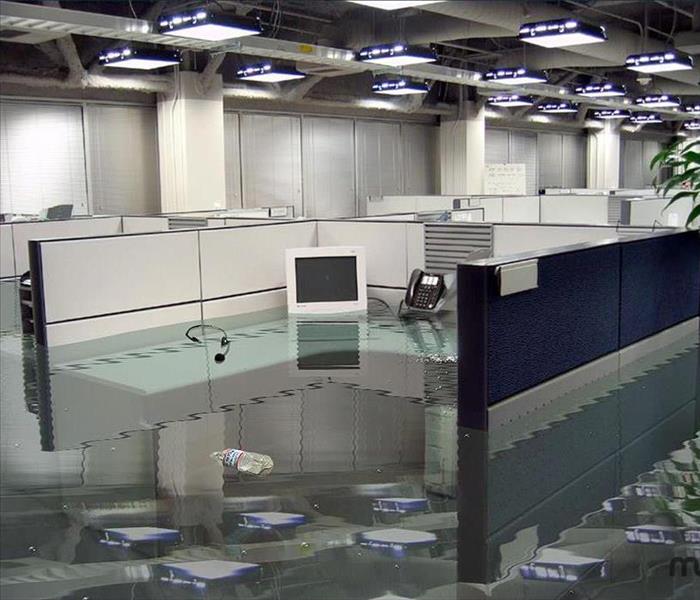4 Commercial Water Damage Steps to Take After a Disaster
4/3/2018 (Permalink)
Hopefully, you never experience a major commercial water damage disaster in your business. With that being said, it is critical to know how to handle a water damage situation before it happens so you are adequately prepared if it does. Flooding can cause a variety of issues including structural damage. As a business owner, you can avoid additional disasters by ensuring the following steps are taken immediately after water damage occurs.
1. Protect Yourself
The safety of you and your employees should be your first priority. Make sure to never put your hands anywhere you cannot see first. Wearing sturdy shoes when walking in flood waters can protect your feet from hidden debris in the water that can trip or cut you. Flood waters can be contaminated so wearing hip waders is also a good idea. Look out for snakes or other creatures that may have been displaced by the flood.
If you are unsure or concerned about your safety at any point in time, remain outside of the property and wait for your restoration company to arrive. They will know all of the procedures and safety precautions to take in order to keep themselves and others safe.They will also have protective gear to wear as they are assessing the situation.
2. Shut Off Potential Hazards
If it is safe to do so, you will want to make sure that you turn off any electricity to the affected areas. You don’t, however, want them to be turned on before you are ready. Doing so can potentially mix electricity and water or create a gas leak before the flood damage can be corrected.
Your restoration company will have access to special tools that can detect moisture. This is key to ensuring the property is completely dried out and preventing any mold from growing. For example, a digital moisture meter is able to find signs of moisture behind walls
3. Take Plenty of Photos
For insurance purposes, it is a great idea to be as thorough as possible when documenting the water damage in your property. Taking lots of pictures will help you when filing a claim with your insurance company. Get photographic evidence of the damage that was left behind by the water, plus any water that is still there. Document all that you can and then speak with your insurance company as quickly as you can to get the claims process going.
4. Salvage What you Can
Keep in mind that it is extremely common for any property affected by a water disaster to experience mold growth. Mold only needs about twenty-four to forty-eight hours to start growing. Drying out the entire property as fast as possible is essential to preventing it from doing so.
The professional restoration company can assist you in this, but you will need to throw away anything that has been saturated for over forty-eight hours and figure out on a case to case basis what else can be saved or needs to be thrown away. Rugs and padding will always need to be tossed if they are damaged by flood waters.





 24/7 Emergency Service
24/7 Emergency Service